Tree stump fire pits offer an ingenious solution for transforming unwanted stumps into functional outdoor gathering spaces. These eco-friendly alternatives to traditional fire pits combine rustic charm with practical functionality, creating unique focal points for backyard entertainment. Whether you're looking to repurpose an existing stump or seeking creative seating solutions around a central fire feature, tree stump designs provide endless possibilities for customization. From simple burning stumps to elaborate multi-element installations, these ideas blend natural materials with modern safety features. Each approach offers distinct advantages in terms of aesthetics, functionality, and maintenance requirements for outdoor living spaces.

1. Classic Natural Burning Stump Fire Pit

Transform an existing tree stump into a natural fire pit by carefully hollowing out the center and allowing controlled burning. This traditional approach involves cutting a bowl-shaped depression into the stump's top surface, creating a safe burning chamber. The surrounding wood gradually burns away over time, naturally expanding the fire pit while maintaining structural integrity. Essential safety measures include positioning a garden hose nearby and ensuring adequate clearance from structures and vegetation. This rustic design works best with hardwood stumps that burn slowly and evenly. The organic process creates unique char patterns and naturally weathered textures that enhance the outdoor ambiance.
2. Metal-Lined Tree Stump Fire Pit with Safety Ring
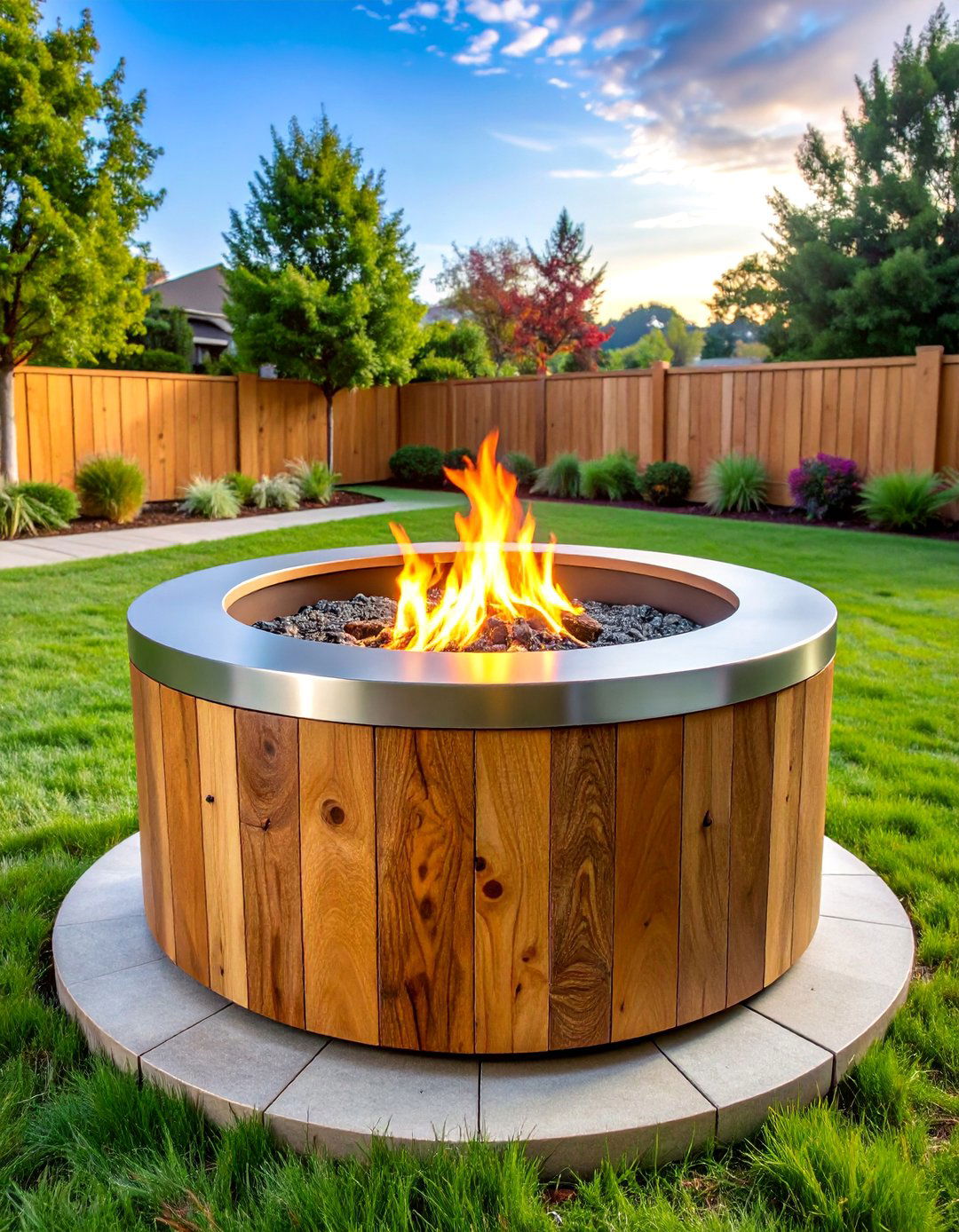
Enhance safety and longevity by installing a steel fire ring insert within your tree stump fire pit. This design involves cutting a precise circular opening in the stump's center and inserting a metal liner that prevents direct wood contact with flames. The steel ring distributes heat evenly while protecting the stump from rapid deterioration. Choose galvanized or stainless steel rings for weather resistance and durability. This approach allows for controlled burning while maintaining the stump's structural integrity for years. The metal liner also facilitates easier cleanup and ash removal, making maintenance more manageable for regular use in outdoor entertainment areas.
3. Tree Stump Fire Pit with Cushioned Log Seating

Create a complete outdoor seating arrangement by surrounding your tree stump fire pit with additional log sections topped with weather-resistant cushions. Cut tree trunk segments to uniform 18-inch heights for comfortable adult seating. Craft custom cushions using outdoor fabric and memory foam, securing them with Velcro strips to prevent sliding. This design accommodates 6-8 people in a circular configuration, promoting conversation and community. Sand the log tops smooth to prevent splinters and apply marine-grade sealant for weather protection. Position seating 4-6 feet from the fire pit center for optimal warmth and safety. Add storage underneath cushions for small outdoor essentials.
4. Elevated Tree Stump Fire Pit with Stone Base

Construct a raised platform using natural stone or concrete blocks to elevate your tree stump fire pit above ground level. This design improves drainage, prevents moisture retention, and creates better airflow for efficient burning. Build a circular stone foundation that extends 12 inches beyond the stump perimeter, filling gaps with gravel for stability. The elevated position makes fire management easier while reducing smoke dispersion issues. Choose complementary stone colors that harmonize with your landscape design. This approach also creates defined boundaries for the fire area and provides additional seating space on the stone perimeter for larger gatherings.
5. Tree Stump Fire Pit with Built-in Storage Compartments

Maximize functionality by carving storage compartments into the sides of larger tree stumps for firewood, kindling, and fire tools. This innovative design creates convenient access to burning materials while maintaining a clean, organized appearance. Hollow out rectangular sections around the stump's circumference, leaving sufficient wall thickness for structural integrity. Line storage areas with metal sheets to protect against moisture and pests. Install hinged wooden doors or removable panels for weather protection. Position compartments at varying heights for different storage needs - lower sections for heavy logs, upper areas for kindling and tools. This self-contained design reduces clutter and enhances outdoor organization efficiency.
6. Mosaic-Decorated Tree Stump Fire Pit

Transform your tree stump fire pit into artistic outdoor sculpture using colorful mosaic tiles or stone fragments. Create intricate patterns around the stump's exterior surface using heat-resistant ceramic tiles, natural stone pieces, or recycled glass. Apply weather-resistant adhesive and grout specifically designed for outdoor applications. Design themes can include geometric patterns, nature motifs, or abstract compositions that reflect personal style preferences. This decorative approach adds visual interest during both daytime and evening use, with firelight creating dynamic shadow patterns across the textured surface. Seal the mosaic work annually to maintain color vibrancy and weather resistance for long-lasting artistic appeal.
7. Tree Stump Fire Pit with LED Light Integration

Enhance evening ambiance by incorporating LED strip lights or individual accent lights around your tree stump fire pit area. Install low-voltage LED strips beneath seating logs or around the stump's base perimeter for subtle illumination. Use warm-toned lights (2700K-3000K) to complement firelight without competing with natural flames. Solar-powered options eliminate electrical installation requirements while providing sustainable lighting solutions. Create different lighting zones for various activities - bright task lighting for fire management, dim ambient lighting for relaxation. Include timer controls or remote operation for convenience. This modern enhancement extends usability into late evening hours while improving safety around the fire pit area.
8. Rustic Tree Stump Fire Pit with Wooden Backrest

Add comfort and traditional charm by constructing wooden backrests for log seating around your tree stump fire pit. Use split logs or planks to create angled backrests that attach to existing stump seats using sturdy metal brackets. Choose weather-resistant wood species like cedar, redwood, or pressure-treated lumber for longevity. Sand all surfaces smooth and apply outdoor wood finish for protection against moisture and UV damage. Design backrests at comfortable angles (15-20 degrees) for extended seating periods. This enhancement transforms basic log seating into comfortable outdoor furniture while maintaining rustic aesthetic appeal. Include armrests for additional comfort during longer gatherings around the fire.
9. Tree Stump Fire Pit with Weather Protection Cover

Extend your fire pit's lifespan by designing a custom weather protection cover that shields the stump from rain, snow, and UV exposure. Create a removable cover using marine-grade canvas, vinyl, or specialized outdoor fabric with waterproof backing. Design the cover with elastic edges or tie-down straps for secure fitting during windy conditions. Include ventilation grommets to prevent moisture buildup and mold formation. For permanent protection, construct a hinged metal lid that doubles as a tabletop when the fire pit isn't in use. This dual-purpose design maintains the area's functionality while protecting your investment from weather damage and extending the stump's usable life significantly.
10. Multi-Level Tree Stump Fire Pit Design

Create visual interest and functional variety by combining stumps of different heights and sizes into a cohesive multi-level fire pit arrangement. Use the tallest stump as the primary fire pit, with shorter stumps serving as seating, tables, or decorative elements. Arrange stumps in organic clusters that encourage natural conversation flow and provide diverse seating options for different preferences. Connect levels using stone pathways or wooden planks for safe navigation. This design accommodates larger groups while creating intimate sub-spaces within the overall gathering area. Vary stump treatments - some with fire capability, others as plant containers or storage units for comprehensive outdoor functionality.
11. Tree Stump Fire Pit with Gravel Surround
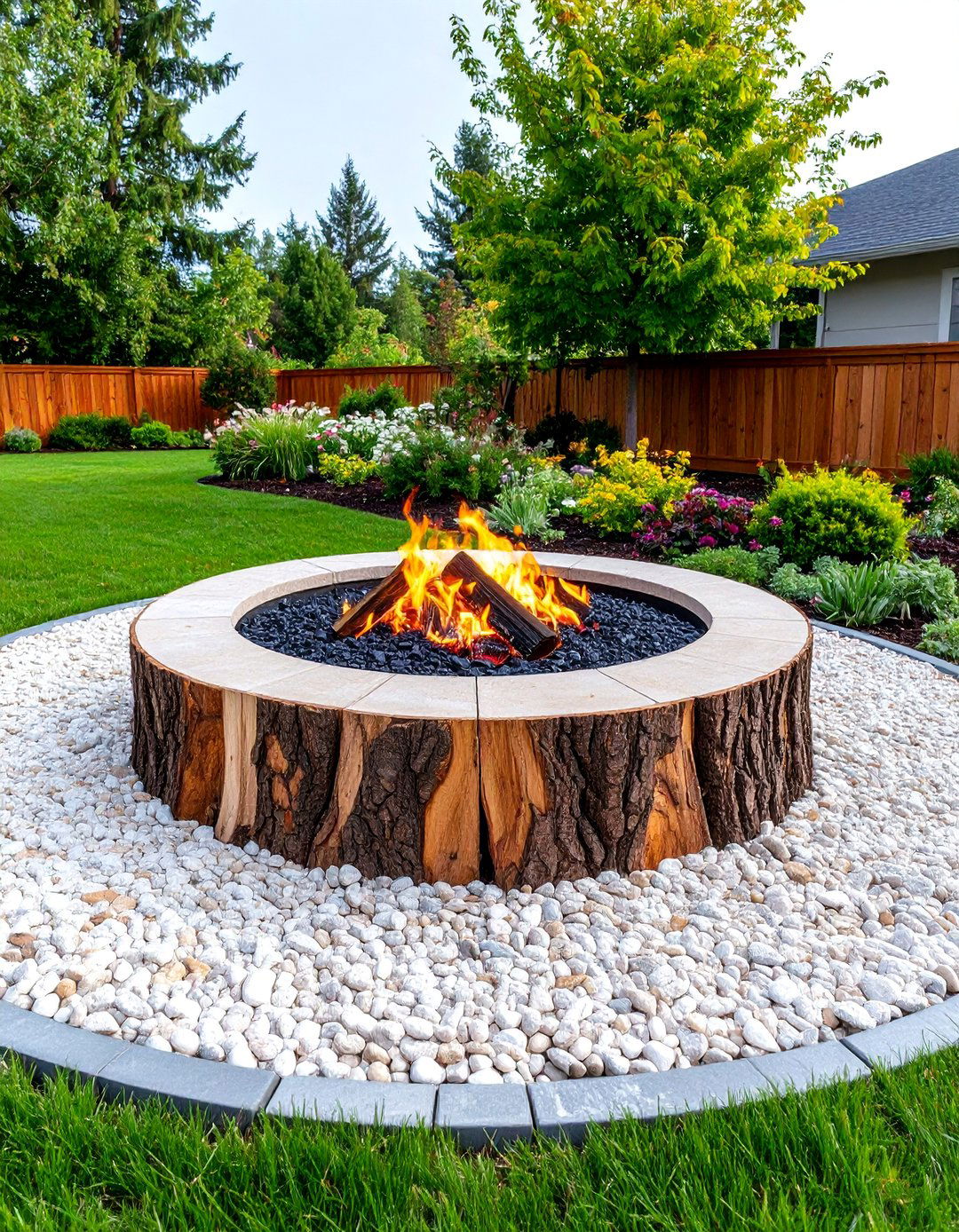
Enhance safety and aesthetics by creating a decorative gravel surround that defines the fire pit area while providing excellent drainage. Excavate a 3-foot radius around the stump fire pit, installing landscape edging to contain decorative gravel. Choose heat-resistant stone types like river rock, lava rock, or crushed granite in colors that complement your landscape design. The gravel surface prevents grass fires, reduces maintenance, and creates a clean transition between the fire area and surrounding lawn. Include stepping stones or flagstone pathways through the gravel for safe access. This professional-looking finish adds definition to your outdoor space while improving fire safety considerably.
12. Painted Tree Stump Fire Pit with Heat-Resistant Coating
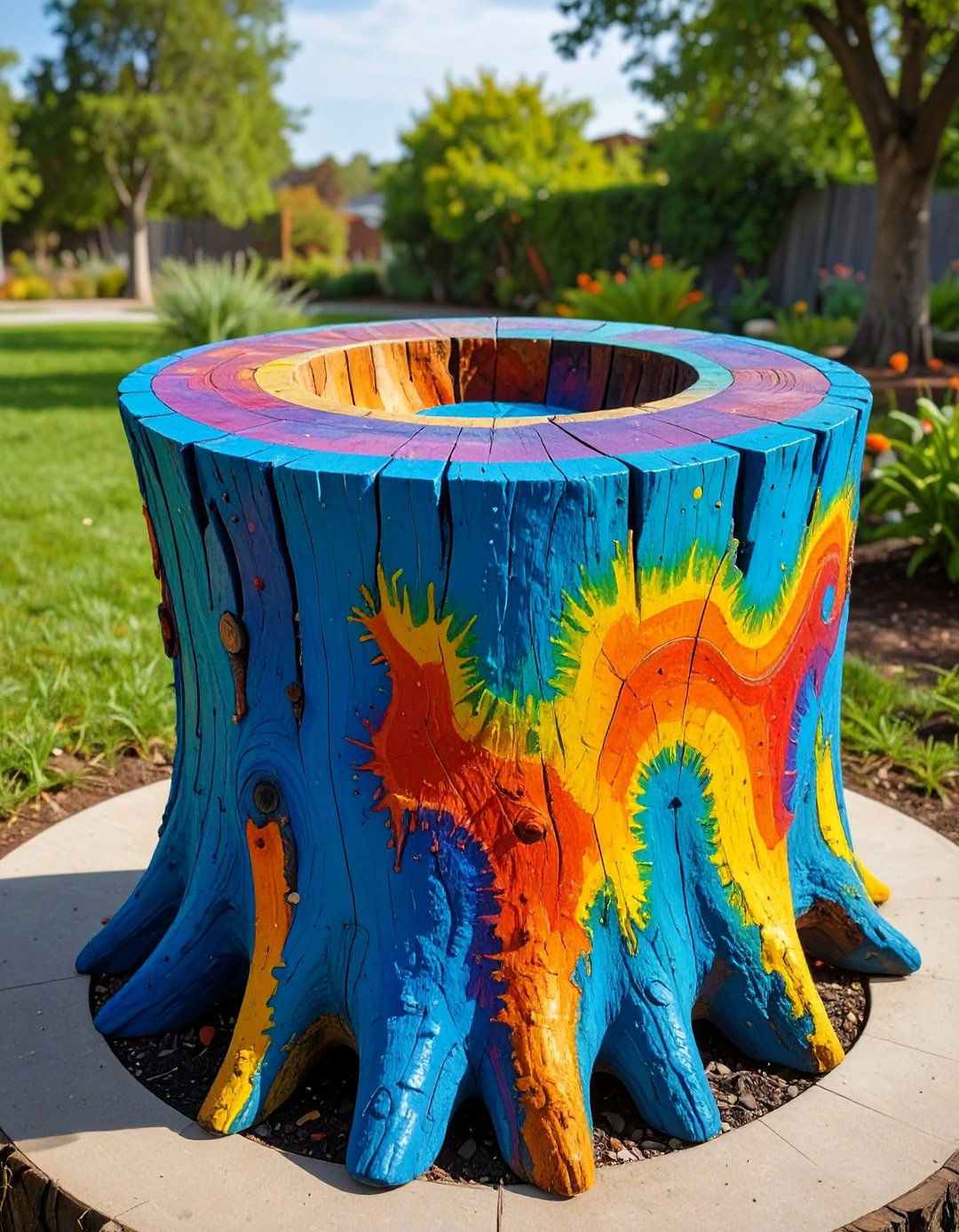
Personalize your tree stump fire pit using specialized heat-resistant paints designed for high-temperature applications. Choose colors that coordinate with your outdoor décor while considering how paint will weather and age over time. Apply primer specifically formulated for exterior wood surfaces before adding decorative coatings. Create patterns, designs, or solid colors that reflect your personal style preferences. Heat-resistant paints maintain color integrity near fire areas while standard exterior paints handle outlying surfaces. Consider using stencils for precise patterns or freehand techniques for artistic expression. Reapply protective coatings annually to maintain appearance and protect underlying wood from weather damage and normal wear.
13. Tree Stump Fire Pit with Rope Handle Details
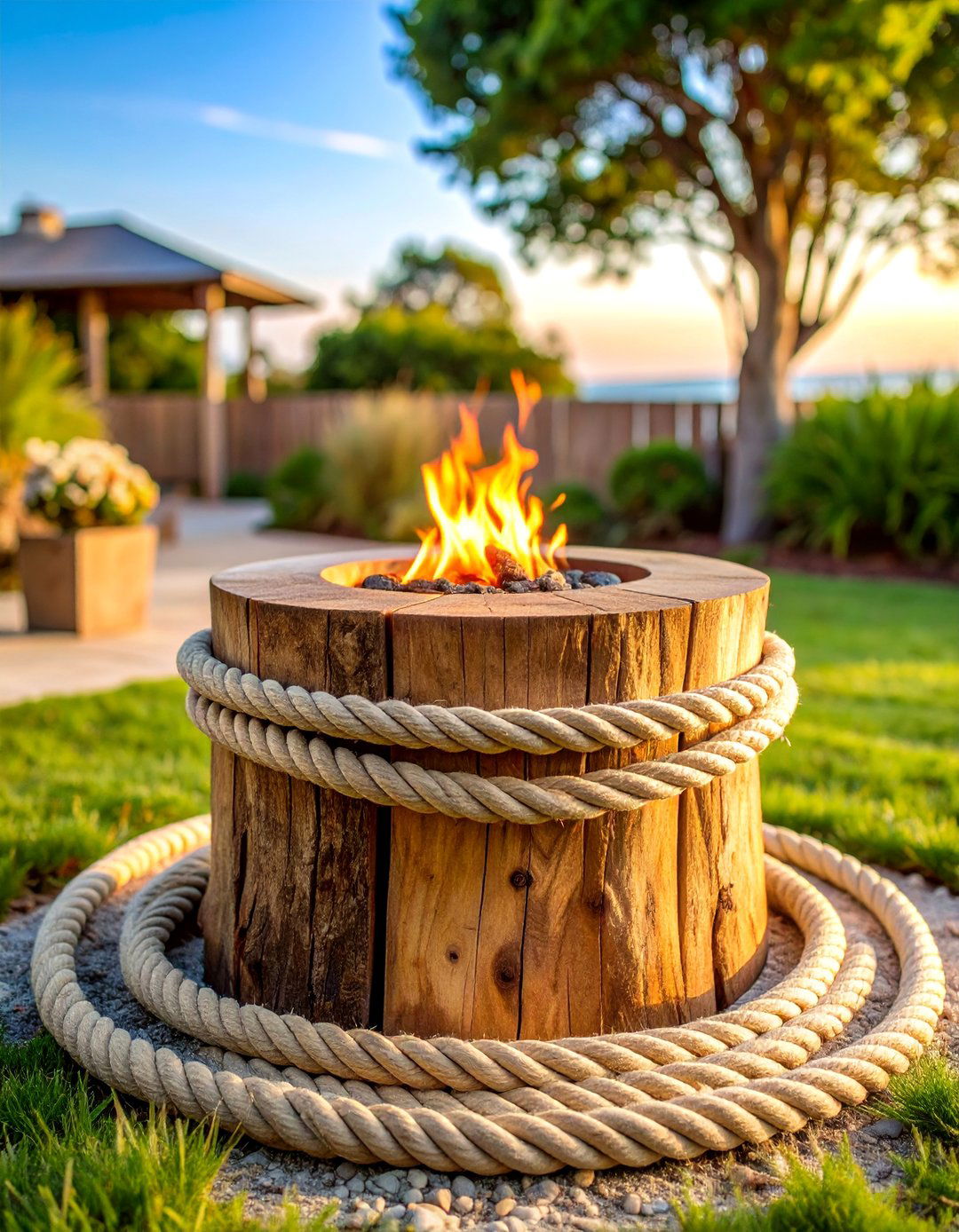
Add rustic charm and practical functionality by incorporating thick rope handles into your tree stump fire pit design. Drill horizontal holes through the stump at appropriate heights and thread marine-grade rope through the openings, securing with knots or metal clamps. These handles facilitate moving smaller stumps or provide grip points for safety around the fire area. Choose natural fiber ropes like hemp or manila for authentic appearance, or synthetic materials for enhanced weather resistance. Position handles strategically for balanced lifting and safe maneuvering. This nautical-inspired detail adds visual texture while improving functionality, especially for portable or repositionable fire pit configurations in flexible outdoor entertainment spaces.
14. Miniature Tree Stump Fire Pit for Small Spaces

Design compact fire pit solutions using smaller tree stumps or manufactured alternatives suitable for patios, balconies, or intimate garden spaces. These scaled-down versions provide fire ambiance without overwhelming limited outdoor areas. Use stumps 12-18 inches in diameter with proportionally smaller fire chambers for safe operation in confined spaces. Include portable features like removable ash pans and compact tool storage. Consider tabletop versions using small log sections with metal inserts for safe indoor-outdoor use. These miniature designs work excellently for apartment dwellers or homeowners with limited yard space who want fire pit experiences without major installations or permanent landscape modifications.
15. Tree Stump Fire Pit with Integrated Planters

Combine fire functionality with living garden elements by carving planting compartments around your tree stump fire pit's perimeter. Create separate planting areas using metal dividers or natural wood barriers to protect plants from heat exposure. Choose heat-tolerant, drought-resistant plants like succulents, ornamental grasses, or Mediterranean herbs that thrive in warm conditions. Position planters at safe distances from direct flame contact while maintaining visual integration with the overall design. This living landscape approach softens the fire pit's appearance during non-use periods and provides year-round visual interest. Include irrigation considerations for plant health and select species that complement your regional climate conditions.
16. Tree Stump Fire Pit with Glow-in-the-Dark Features

Create magical evening effects by incorporating phosphorescent materials into your tree stump fire pit design for continued illumination after dark. Apply glow-in-the-dark paints to select areas like rim edges, safety markers, or decorative patterns that charge during daylight hours. Use food-safe phosphorescent powders mixed with clear outdoor sealers for custom applications. These materials provide subtle guidance lighting for safety navigation around the fire area after flames die down. Consider adding glow rocks or decorative elements that store and release light energy throughout the evening. This innovative approach enhances safety while creating unique atmospheric effects that distinguish your outdoor space from conventional fire pit installations.
17. Tree Stump Fire Pit with Natural Bark Preservation

Maintain the authentic natural appearance by carefully preserving and protecting the original bark during tree stump fire pit construction. This approach requires selecting stumps with intact, healthy bark and treating the surface to prevent deterioration. Apply specialized bark preservation products that penetrate and seal while maintaining natural texture and appearance. Focus fire containment in central areas while protecting outer bark surfaces from direct heat exposure. This design philosophy celebrates the tree's original character while creating functional fire features. Regular maintenance includes reapplication of protective treatments and monitoring for pest activity or moisture damage that could compromise bark integrity over time.
18. Tree Stump Fire Pit with Copper Accent Elements

Incorporate elegant copper elements that develop beautiful patina over time, adding sophisticated metallic accents to your rustic tree stump fire pit. Install copper bands around the stump circumference, decorative copper bowls for the fire chamber, or copper-lined storage compartments. The metal's natural oxidation process creates evolving color variations from bright copper to deep verdigris green. Choose marine-grade copper for enhanced weather resistance and longevity. These accents provide striking visual contrast against natural wood textures while adding monetary value to your outdoor installation. The copper elements also conduct and radiate heat efficiently, potentially improving the fire pit's warming capabilities for surrounding seating areas.
19. Tree Stump Fire Pit with Removable Cooking Grate

Transform your fire pit into a versatile outdoor cooking station by incorporating removable grilling grates and cooking accessories. Design adjustable grate systems that position at various heights above the fire for different cooking techniques. Include swing-arm mechanisms that allow grates to move in and out of the fire zone for heat control. Choose heavy-duty steel or cast iron grates that withstand high temperatures and provide excellent heat retention. This multifunctional approach maximizes your outdoor investment by combining ambiance with practical cooking capabilities. Store cooking accessories in integrated compartments or nearby storage solutions for convenient access during outdoor entertaining and meal preparation activities.
20. Tree Stump Fire Pit with Decorative Stone Inlay

Enhance visual appeal by creating intricate stone inlay patterns within your tree stump fire pit's surface areas. Use contrasting stone types, colors, and textures to develop geometric designs, natural motifs, or personalized patterns. Carefully route shallow channels in the wood surface and insert stones using outdoor-rated adhesives. Choose stones with similar thermal expansion properties to prevent cracking during heating and cooling cycles. This artistic technique transforms functional fire pits into decorative outdoor sculptures that serve as focal points even when not in use. Plan designs that accommodate the stump's natural grain patterns and wood characteristics for seamless integration between natural and decorative elements.
21. Tree Stump Fire Pit with Wind Screen Design

Improve fire performance and safety by incorporating removable wind screens that protect flames from gusty conditions while maintaining proper ventilation. Construct screens using tempered glass panels, metal mesh, or heat-resistant fabric materials that can withstand high temperatures. Design modular panels that attach to the stump perimeter using brackets or clips for easy removal and storage. These screens reduce ember dispersal during windy conditions while concentrating heat output for improved warming efficiency. Include ventilation gaps or adjustable panels that maintain proper airflow for clean burning. This enhancement extends usable fire pit days into windier seasons while improving overall safety for surrounding vegetation and structures.
22. Tree Stump Fire Pit with Memory Foam Seating

Maximize comfort during extended fire pit gatherings by creating premium seating using memory foam cushions specifically designed for outdoor use. Cover high-quality memory foam with marine-grade vinyl or outdoor performance fabrics that resist moisture, UV damage, and temperature extremes. Design cushions with drainage features and quick-dry cores to prevent water retention during rain events. Secure cushions to log seats using heavy-duty Velcro, snaps, or tie-down systems that prevent movement during use. This luxury approach transforms basic stump seating into comfortable outdoor furniture comparable to indoor seating quality while maintaining weather resistance for year-round outdoor use.
23. Tree Stump Fire Pit with Artistic Wood Carving

Commission or create artistic wood carvings that transform your tree stump fire pit into a unique outdoor sculpture celebrating natural themes, cultural motifs, or personal expressions. Professional carvers can create intricate designs ranging from wildlife scenes to abstract patterns that complement your landscape design. Protect carved surfaces with specialized wood preservatives that maintain detail visibility while preventing weather damage. Consider carving themes that reflect regional wildlife, family interests, or cultural heritage for personalized outdoor art. This artistic approach creates conversation pieces that serve functional fire pit purposes while contributing significant aesthetic value to your outdoor living space investment.
24. Tree Stump Fire Pit with Drainage System

Ensure longevity and proper performance by installing comprehensive drainage systems that prevent water accumulation and wood rot. Design drainage features including French drains around the stump perimeter, central drainage wells, and sloped surfaces that direct water away from wood surfaces. Use perforated pipes, gravel layers, and landscape fabric to create effective water management systems. This engineering approach prevents the most common cause of tree stump fire pit failure while maintaining dry conditions for efficient burning. Include removable drain covers for easy maintenance access and consider connecting to existing landscape drainage systems for comprehensive water management throughout your outdoor entertainment area.
25. Tree Stump Fire Pit with Modular Seating Arrangement

Create flexible outdoor entertainment spaces using modular seating components that rearrange around your tree stump fire pit for different group sizes and activities. Design lightweight, weatherproof seating modules that stack, nest, or connect for various configurations. Include storage compartments within seating units for cushions, fire tools, and outdoor accessories. This adaptable approach accommodates intimate gatherings or larger parties by adjusting seating arrangements as needed. Choose materials that complement the natural wood aesthetic while providing durability and comfort. Consider wheels or handles for easy repositioning and storage during off-seasons. This modern approach to traditional fire pit gathering spaces provides maximum flexibility for diverse outdoor entertainment needs.
Conclusion:
Tree stump fire pits represent an innovative fusion of sustainability, functionality, and rustic charm that transforms outdoor living spaces into inviting gathering destinations. These versatile designs accommodate various skill levels, budgets, and aesthetic preferences while promoting eco-friendly repurposing of natural materials. From simple natural burning stumps to elaborate multi-feature installations, each approach offers unique benefits for outdoor entertainment, safety, and visual appeal. The key to successful implementation lies in balancing creative vision with practical safety considerations, proper materials selection, and regular maintenance. These fire pit solutions create lasting outdoor memories while adding significant value to residential landscapes.


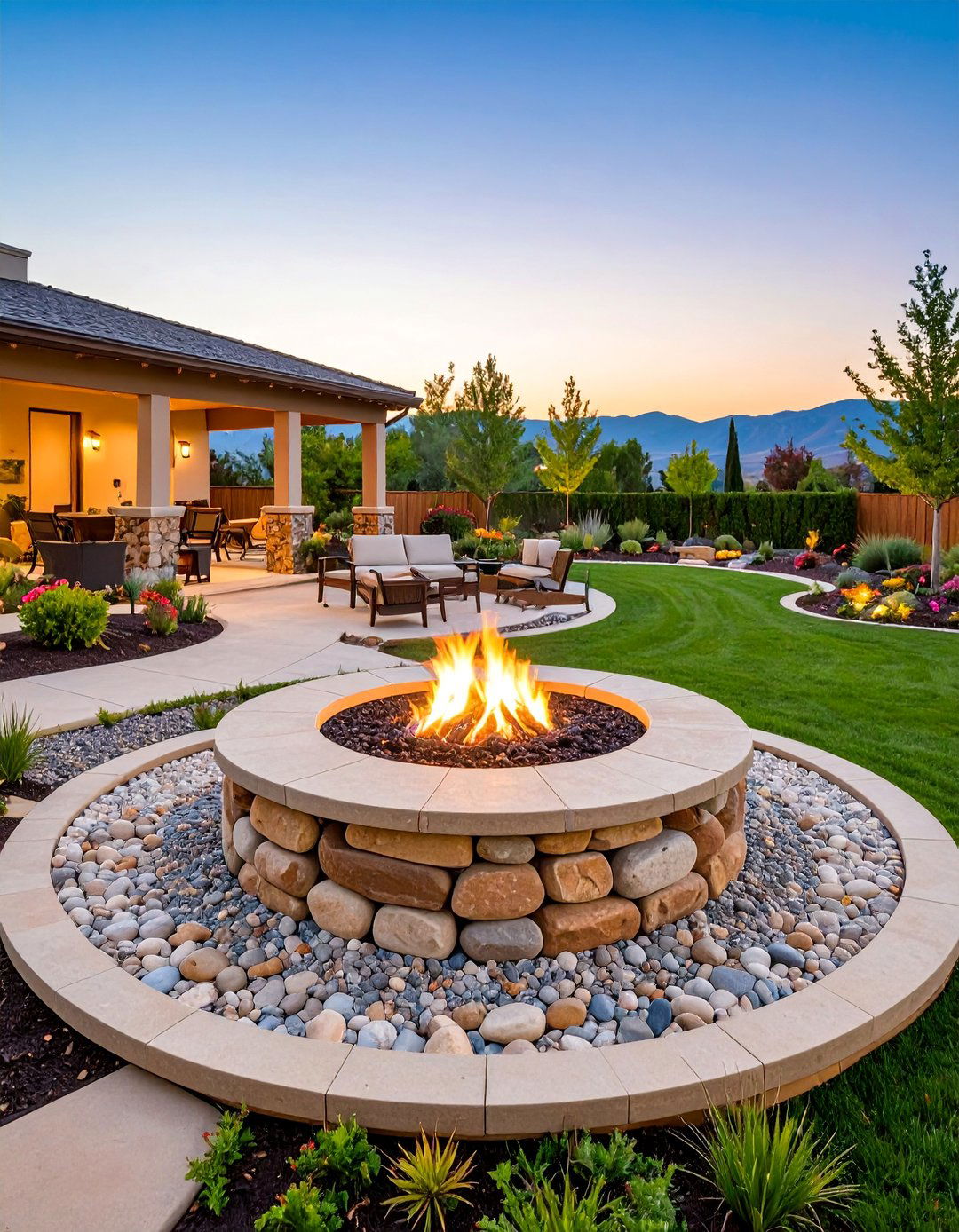
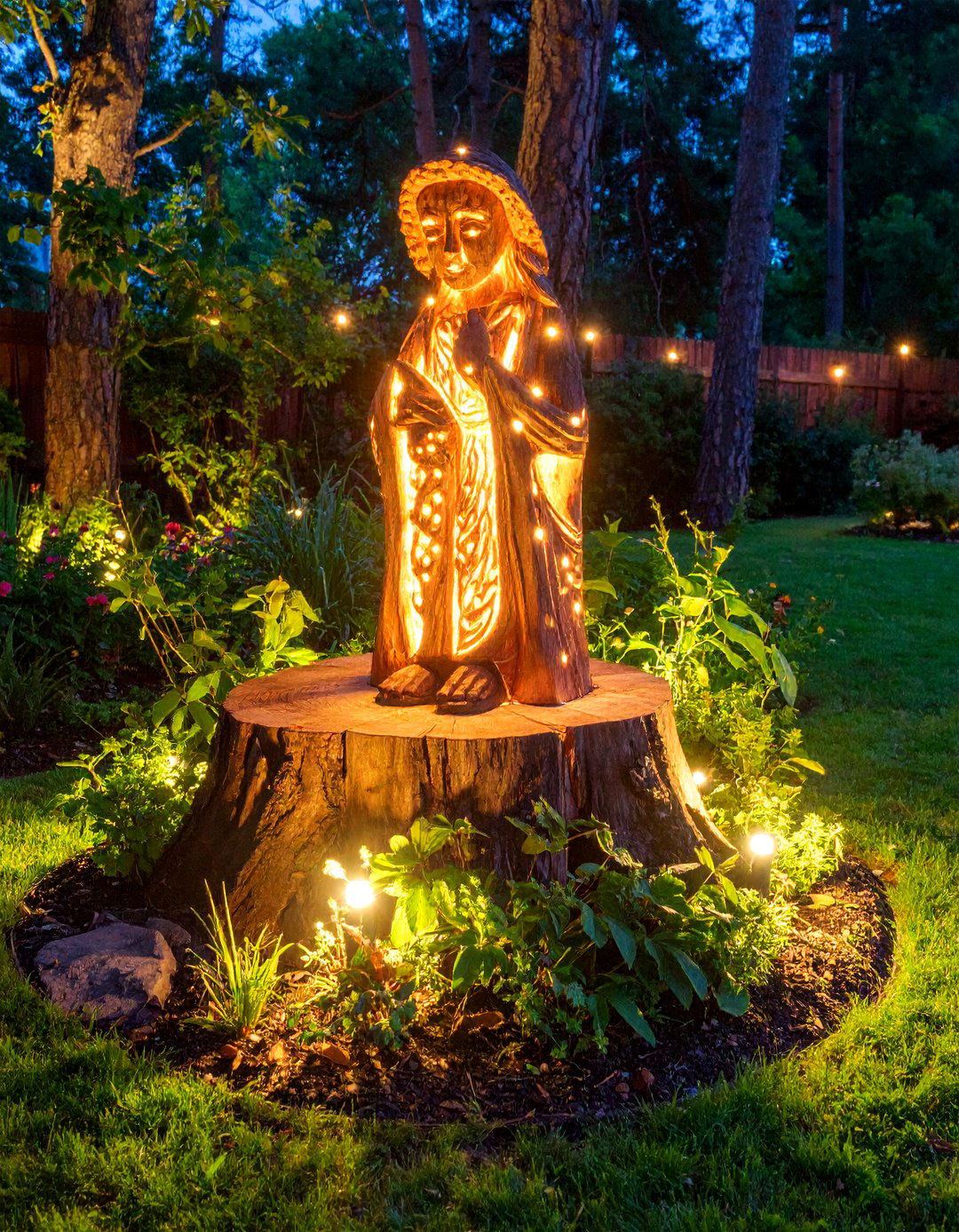


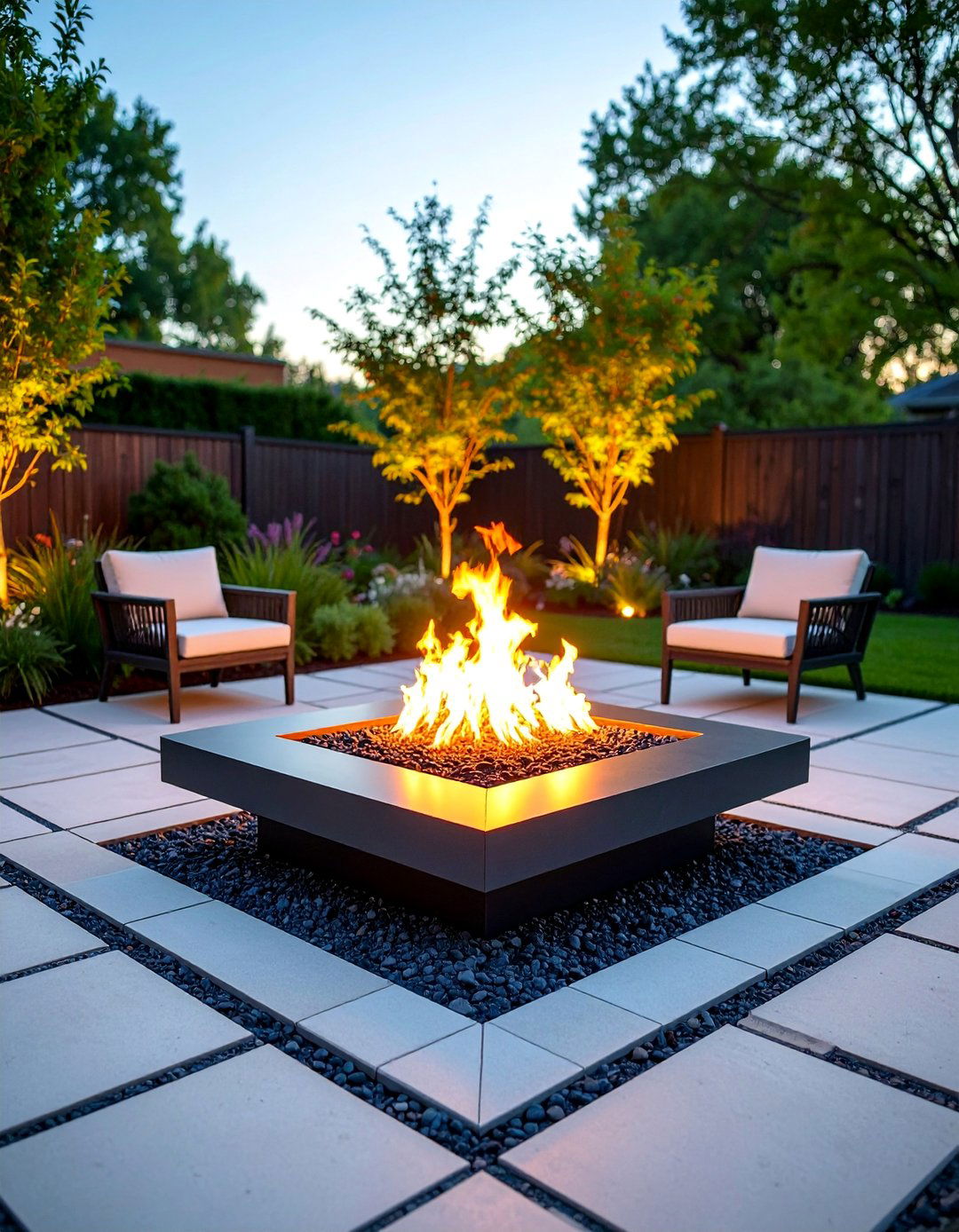
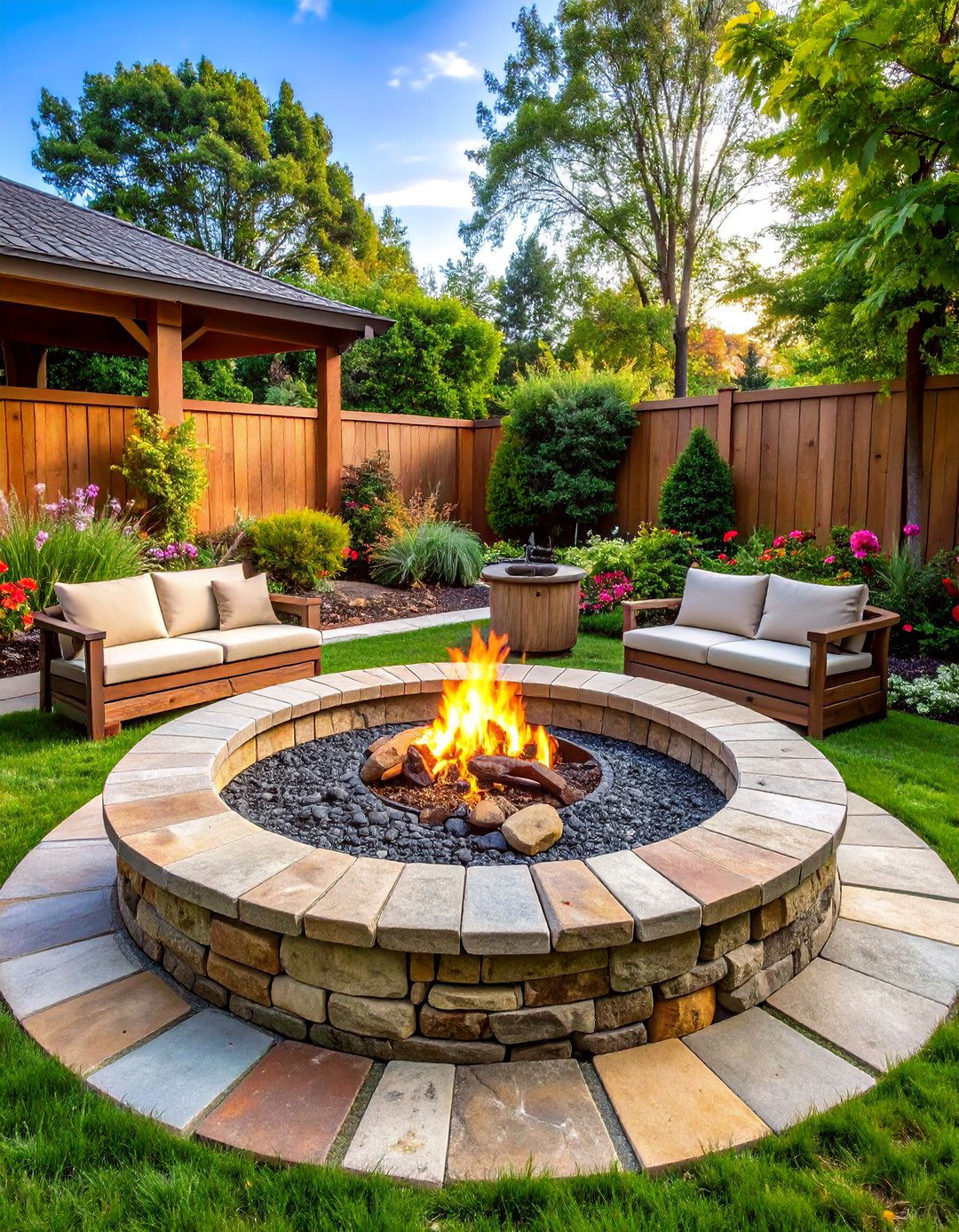
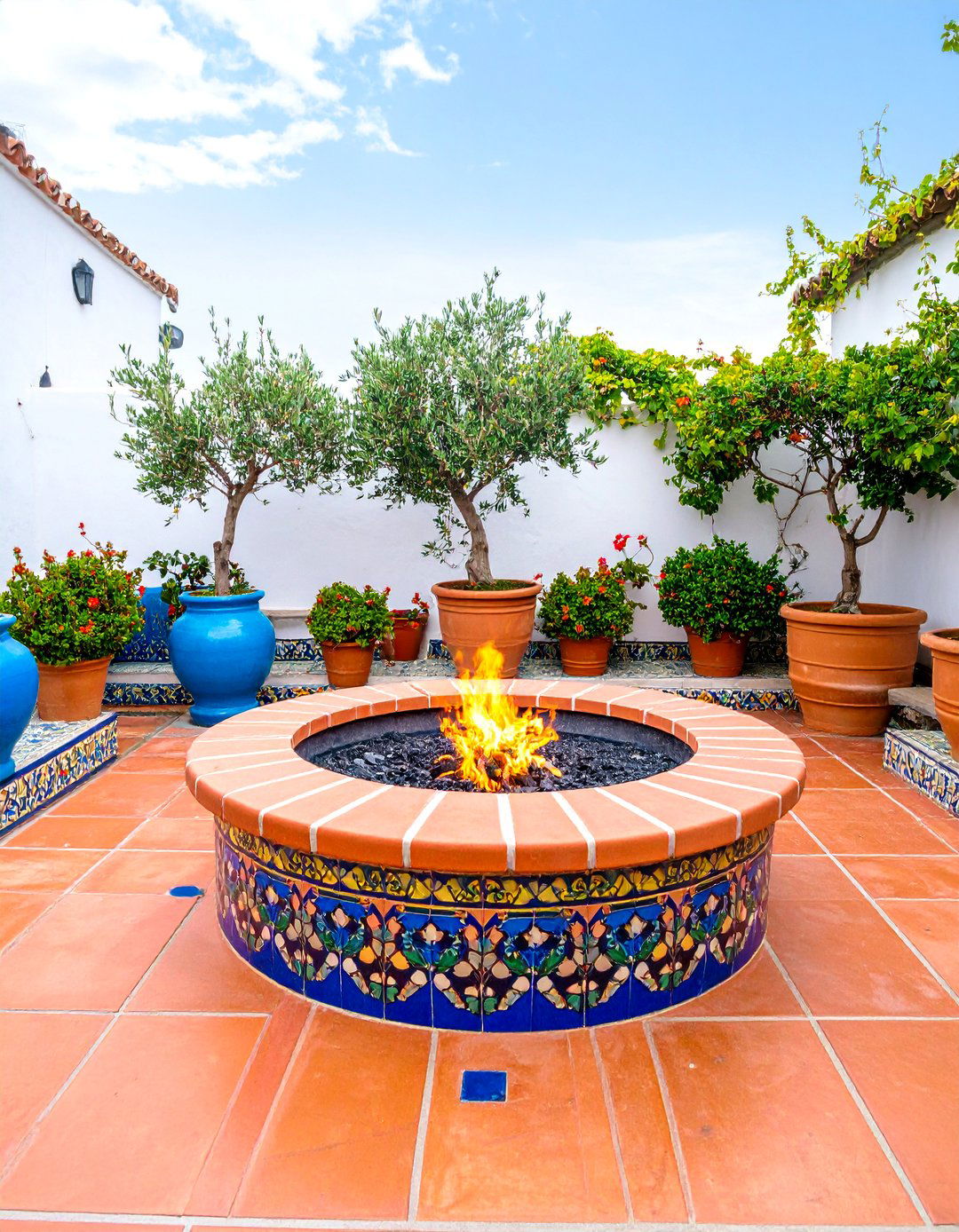
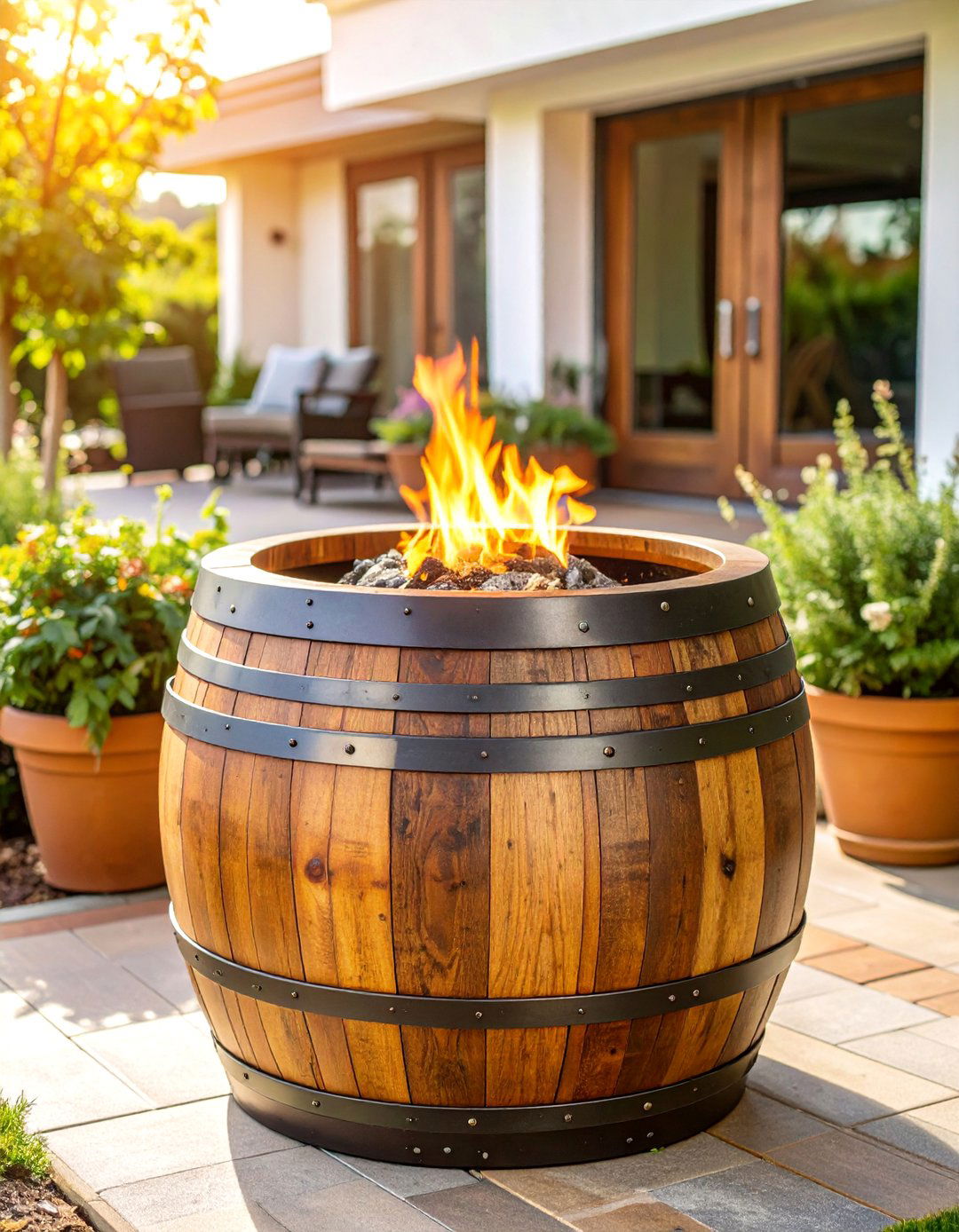


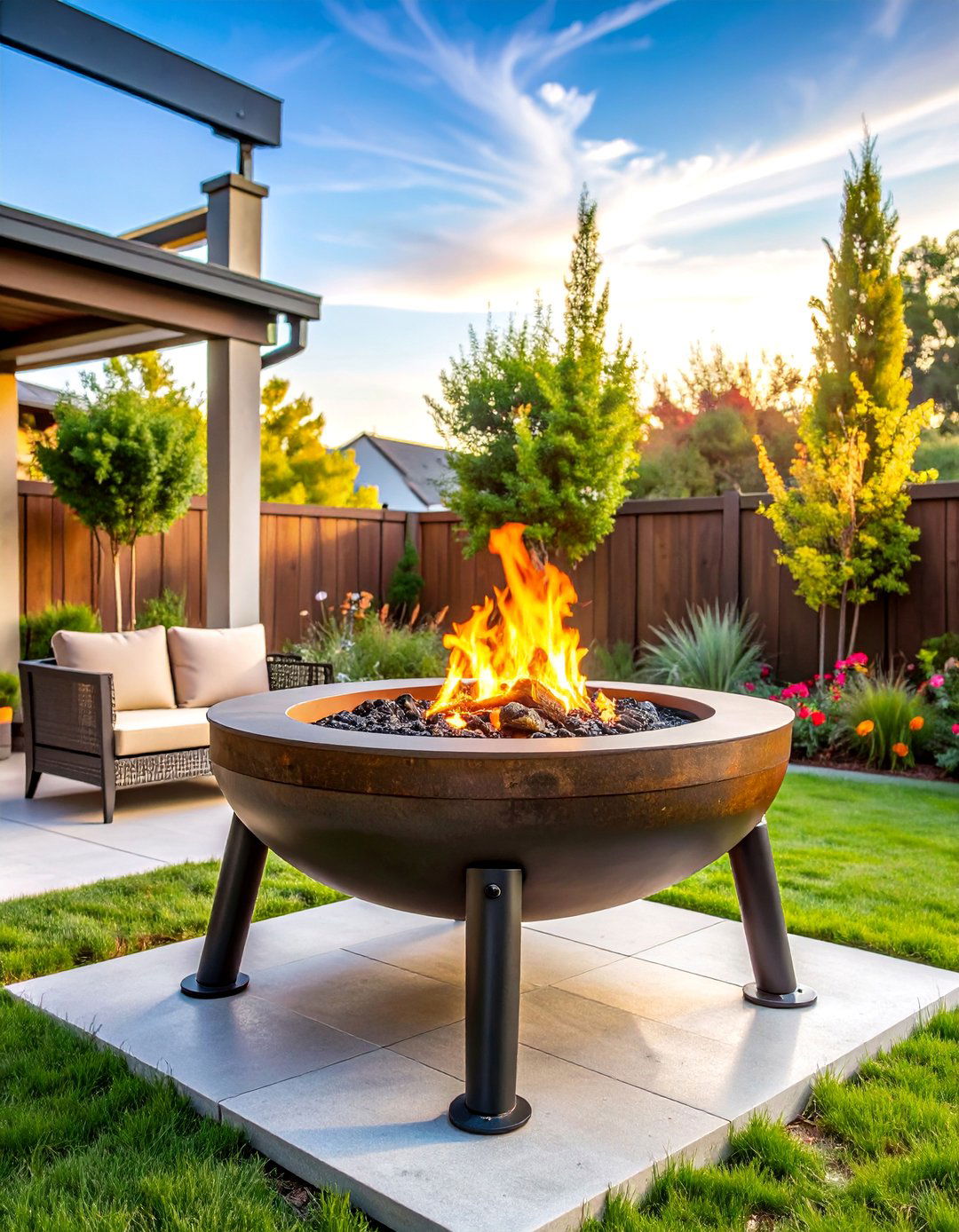



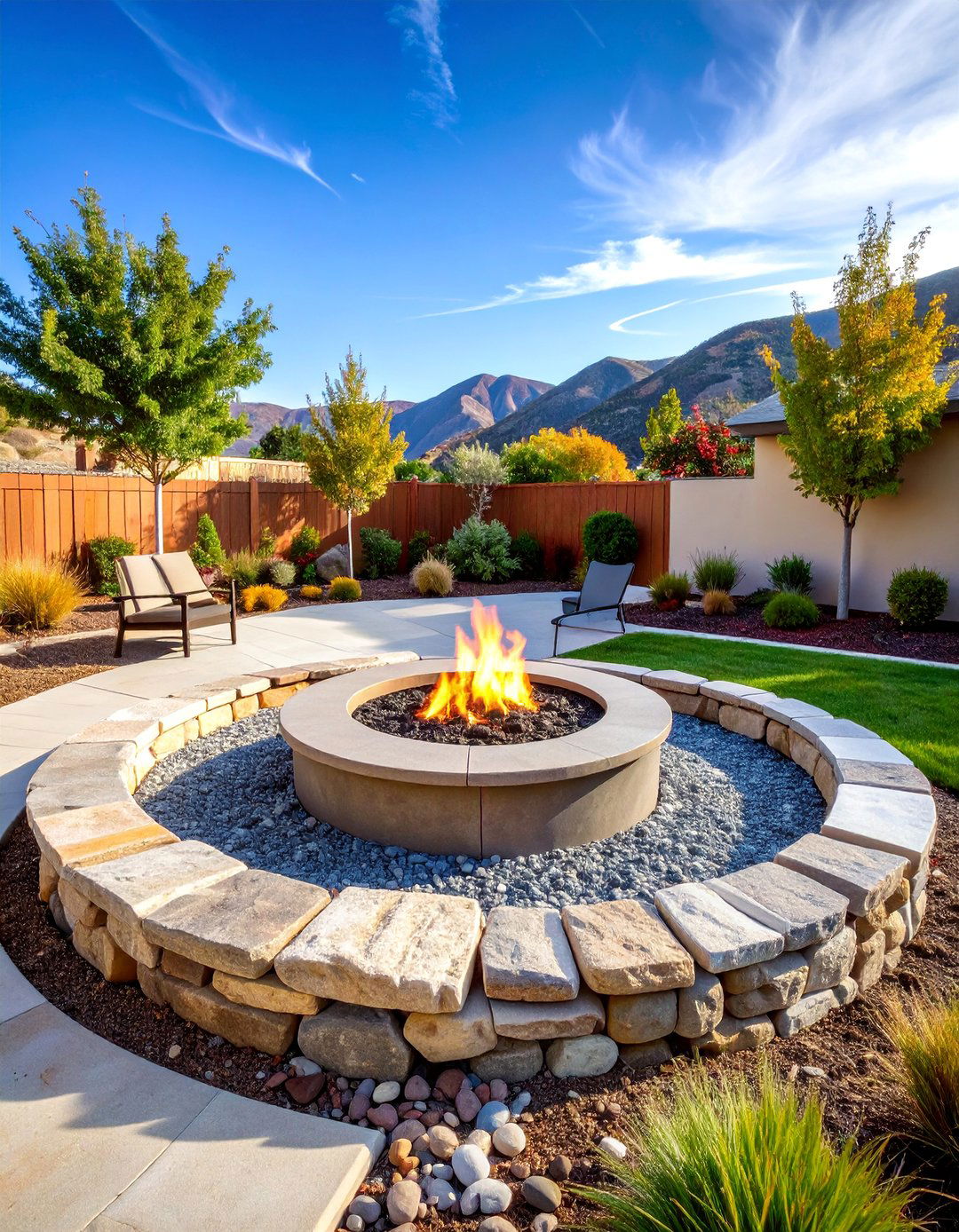
Leave a Reply